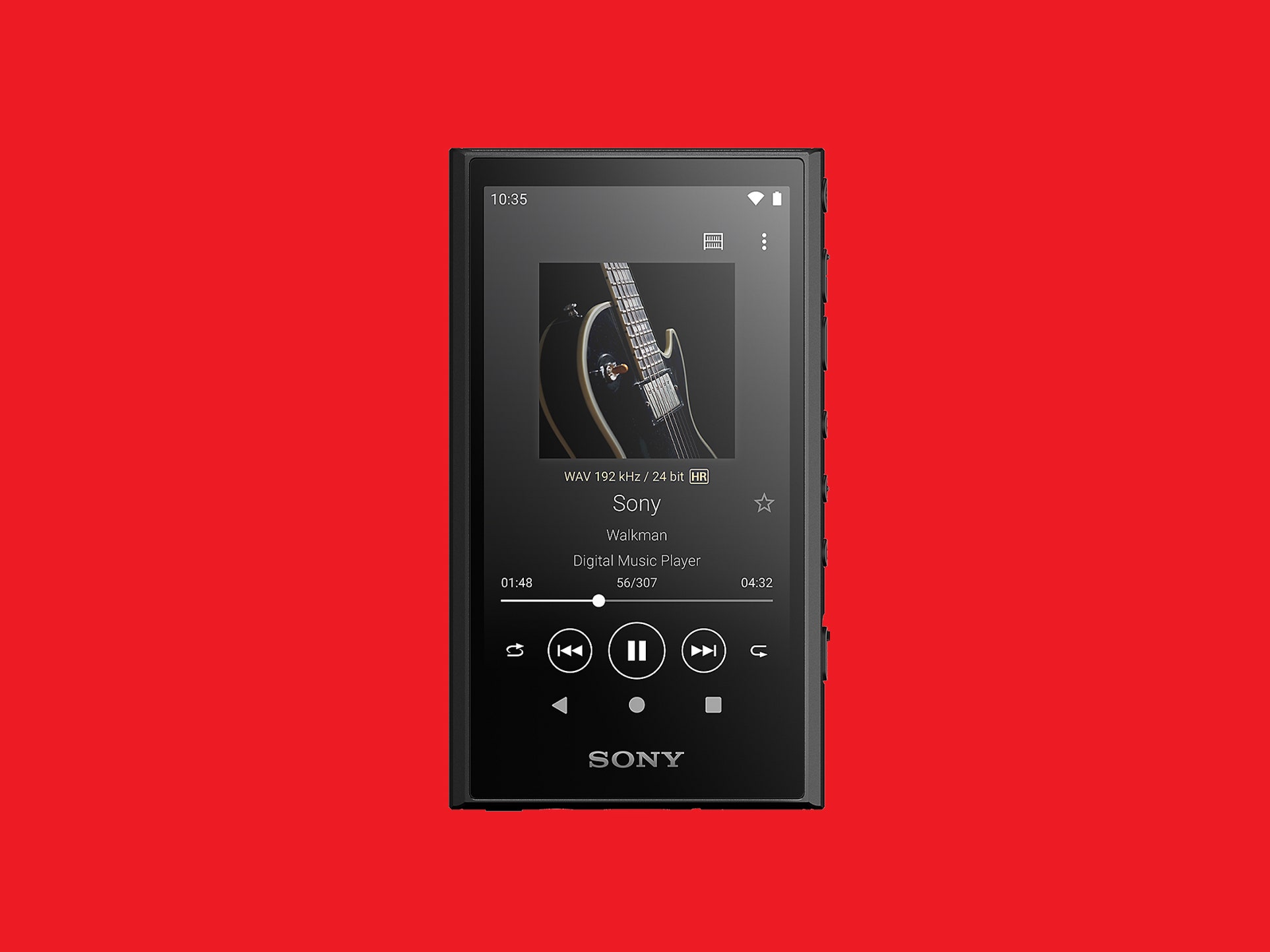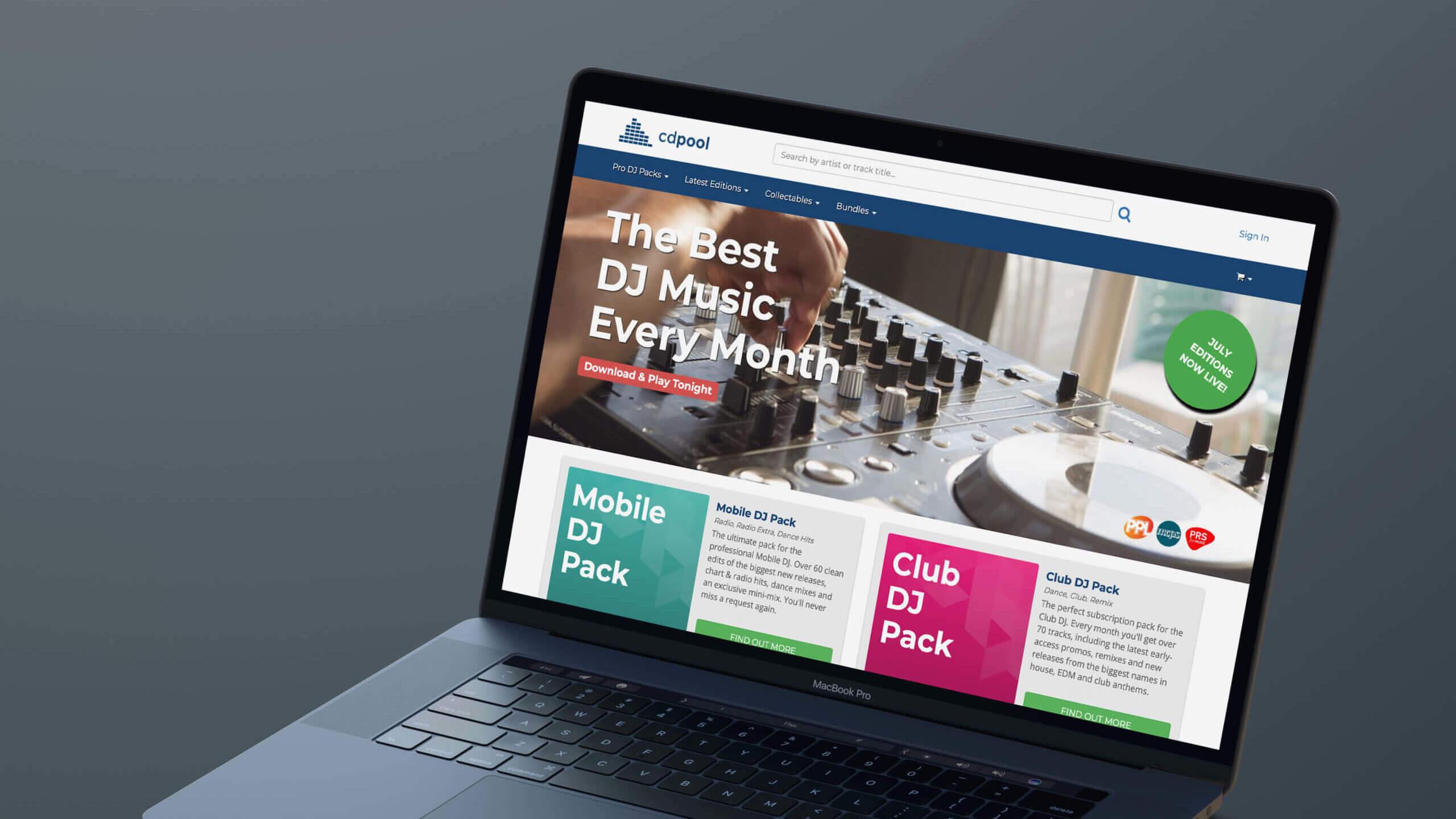Home>Production & Technology>Digital>How Has The Music Industry Been Affected By The Internet And Digital Downloading


Digital
How Has The Music Industry Been Affected By The Internet And Digital Downloading
Published: March 9, 2024
Discover the impact of digital downloading on the music industry and how the internet has revolutionized music distribution and consumption. Learn about the challenges and opportunities brought about by the digital era.
(Many of the links in this article redirect to a specific reviewed product. Your purchase of these products through affiliate links helps to generate commission for AudioLover.com, at no extra cost. Learn more)
Table of Contents
Introduction
The advent of the internet and digital downloading has revolutionized the music industry in unprecedented ways. The traditional landscape of purchasing physical albums from brick-and-mortar stores has been reshaped by the convenience and accessibility of digital music. This transformation has not only altered the way music is consumed but has also significantly impacted the business models, distribution channels, and marketing strategies employed by artists and record labels.
The digital era has ushered in a new era of music consumption, enabling listeners to access an extensive catalog of songs with just a few clicks. This shift has empowered music enthusiasts to curate personalized playlists and explore diverse genres without the constraints of physical storage. Moreover, the rise of digital platforms has democratized the music industry, providing independent artists with a global stage to showcase their talent and connect with a broader audience.
As we delve into the profound influence of digital downloading on the music industry, it becomes evident that this technological evolution has not been without its challenges. The ease of sharing and distributing digital music has raised concerns about piracy and copyright infringement, posing significant hurdles for artists and copyright holders. Additionally, the shift towards digital downloads has disrupted traditional revenue streams, prompting industry stakeholders to adapt and innovate in response to these transformative changes.
In the subsequent sections, we will explore the multifaceted impact of digital downloading on record sales, distribution and marketing strategies, the emergence of new business models, the prevalence of piracy, and the rise of streaming services. By delving into these aspects, we can gain a comprehensive understanding of how the music industry has navigated the digital landscape and adapted to the evolving preferences of music consumers.
The Rise of Digital Downloading
The rise of digital downloading has fundamentally transformed the way music is accessed and enjoyed. With the advent of digital platforms and online music stores, consumers gained the ability to purchase and download individual songs or entire albums with unparalleled convenience. This marked a significant departure from the traditional model of purchasing physical CDs or vinyl records from brick-and-mortar stores. The emergence of digital downloading not only revolutionized the distribution of music but also redefined the concept of music ownership.
One of the pivotal factors contributing to the surge in digital downloading was the widespread availability of high-speed internet connections. This technological advancement facilitated seamless access to digital music libraries, enabling users to explore and acquire a diverse array of songs from the comfort of their homes. The transition from physical media to digital downloads also alleviated the constraints of storage space, allowing music enthusiasts to amass extensive collections without the burden of physical clutter.
Furthermore, the rise of digital downloading empowered artists and record labels to reach a global audience without the limitations imposed by physical distribution channels. Independent musicians, in particular, leveraged digital platforms to showcase their creativity and connect with fans across geographical boundaries. This democratization of the music industry fostered a vibrant ecosystem where emerging talents could gain visibility and recognition on a scale previously unattainable.
The proliferation of portable digital music players, such as the iconic iPod, further catalyzed the popularity of digital downloads. These devices offered unparalleled portability, enabling users to carry thousands of songs in their pockets and personalize their listening experiences on the go. The seamless integration of digital downloads with these portable players facilitated a paradigm shift in how music was consumed, fostering a culture of individualized playlists and on-the-go access to a vast repertoire of songs.
As digital downloading continued to gain momentum, it became increasingly intertwined with the concept of music streaming, paving the way for subscription-based services and on-demand access to extensive music libraries. This evolution not only reflected changing consumer preferences but also signaled a pivotal shift in the monetization of music content.
The rise of digital downloading represents a watershed moment in the history of the music industry, underscoring the transformative power of technology in reshaping the dynamics of music consumption and distribution. This seismic shift laid the foundation for subsequent innovations, setting the stage for the era of music streaming and the ongoing evolution of digital music ecosystems.
Impact on Record Sales
The advent of digital downloading has exerted a profound impact on record sales, reshaping the traditional paradigm of music consumption and commerce. The transition from physical media to digital formats has significantly altered the dynamics of how music is purchased, leading to a discernible shift in consumer behavior and revenue streams within the music industry.
One of the most notable consequences of the rise of digital downloading has been the decline in physical album sales. With the convenience and accessibility of digital music, consumers have increasingly gravitated towards purchasing individual songs or albums in digital formats, eschewing the need for physical CDs or vinyl records. This shift has resulted in a tangible decline in the sales of traditional physical media, prompting record stores to adapt to the evolving landscape or face the prospect of obsolescence.
Moreover, the emergence of digital platforms and online music stores has facilitated a la carte purchasing, allowing consumers to cherry-pick their favorite songs rather than committing to full-length albums. This shift towards individual song purchases has redefined the concept of album sales, with artists and record labels needing to adapt their marketing and distribution strategies to cater to the evolving preferences of digital music consumers.
The decline in physical album sales has also necessitated a reevaluation of revenue models within the music industry. As digital downloads and streaming services gained prominence, artists and record labels have had to recalibrate their revenue streams, placing greater emphasis on digital sales and royalties from streaming platforms. This transition has prompted a reconfiguration of contractual agreements and royalty structures, reflecting the evolving landscape of music consumption and monetization.
Furthermore, the impact of digital downloading on record sales has been accompanied by a surge in digital piracy and unauthorized distribution of music. The ease of sharing digital files has posed significant challenges in combating piracy, leading to revenue losses for artists and copyright holders. This pervasive issue has prompted concerted efforts to implement anti-piracy measures and enforce copyright protection, underscoring the complexities inherent in safeguarding intellectual property in the digital age.
In essence, the rise of digital downloading has precipitated a transformative shift in record sales, necessitating a recalibration of revenue models, distribution strategies, and anti-piracy measures within the music industry. As the digital landscape continues to evolve, stakeholders must navigate these challenges while leveraging the opportunities presented by digital platforms to sustain and propel the commercial viability of music content.
Changes in Distribution and Marketing
The advent of digital downloading has engendered a paradigm shift in the distribution and marketing strategies employed within the music industry. Traditional modes of music distribution, characterized by physical retail outlets and promotional campaigns centered on radio airplay and print media, have undergone a profound transformation in response to the ascendancy of digital platforms and online music stores.
Digital distribution has emerged as a cornerstone of contemporary music dissemination, enabling artists and record labels to reach a global audience with unprecedented ease and efficiency. The ubiquity of digital platforms has facilitated the seamless delivery of music content to consumers worldwide, transcending geographical barriers and temporal constraints. This democratization of distribution has empowered independent artists to amplify their reach and visibility, fostering a diverse and inclusive landscape for music consumption.
Moreover, the evolution of digital distribution has catalyzed a renaissance in marketing strategies, ushering in an era of targeted digital campaigns and data-driven promotional initiatives. The granular insights afforded by digital platforms have enabled marketers to tailor their outreach efforts with precision, leveraging demographic and behavioral data to engage audiences in a more personalized and impactful manner. This shift towards data-driven marketing has facilitated the cultivation of loyal fan bases and the identification of niche audiences, thereby amplifying the resonance and relevance of music content in an increasingly crowded digital ecosystem.
The advent of social media and streaming platforms has further augmented the scope and efficacy of music marketing, providing artists with dynamic channels to connect with fans and cultivate a vibrant community around their creative endeavors. From engaging with fans through interactive content to leveraging influencer partnerships and user-generated promotions, the digital landscape has empowered artists to forge deeper and more meaningful connections with their audience, transcending the limitations of traditional marketing channels.
Furthermore, the rise of digital distribution and marketing has necessitated a reevaluation of revenue models and monetization strategies within the music industry. As physical sales wane in favor of digital downloads and streaming, artists and record labels have embraced innovative approaches to monetize their music, including merchandise sales, experiential offerings, and collaborative brand partnerships. This diversification of revenue streams underscores the adaptive resilience of the music industry in navigating the digital terrain and capitalizing on emerging opportunities for commercial sustainability.
In essence, the changes in distribution and marketing precipitated by the rise of digital downloading have redefined the contours of music dissemination and audience engagement. The convergence of digital platforms, data-driven marketing, and diversified revenue models has imbued the music industry with newfound dynamism and adaptability, underscoring the transformative impact of digital evolution on the commercial and creative dimensions of music.
New Business Models
The proliferation of digital downloading has catalyzed the emergence of new and innovative business models within the music industry, reshaping the commercial landscape and redefining the dynamics of revenue generation and artist-fan interactions. These novel business paradigms have not only responded to the transformative impact of digital evolution but have also leveraged technological advancements to forge symbiotic relationships between artists, platforms, and audiences.
One of the hallmark developments in the realm of new business models is the ascendancy of direct-to-fan engagement facilitated by digital platforms and social media. Artists have harnessed these channels to cultivate direct relationships with their audience, offering exclusive content, behind-the-scenes access, and personalized interactions. This direct engagement has transcended traditional intermediaries, empowering artists to forge deeper connections with their fans and cultivate dedicated communities around their creative endeavors.
Furthermore, the advent of crowdfunding and patronage platforms has revolutionized the funding and production of music content, enabling artists to harness the support of their fan base to finance albums, tours, and creative projects. Through crowdfunding campaigns, artists can directly involve their audience in the creative process, fostering a sense of co-creation and shared ownership. This democratization of funding has not only provided artists with financial backing but has also engendered a sense of camaraderie and mutual investment between creators and their supporters.
In addition, the rise of subscription-based streaming services has engendered a shift towards recurring revenue models, offering listeners access to vast music libraries in exchange for a monthly fee. This subscription-based paradigm has redefined the monetization of music content, providing artists with a steady stream of income based on listenership and engagement. Moreover, platforms offering tiered subscription models have enabled artists to leverage exclusive content and perks to incentivize fan subscriptions, fostering a sustainable and mutually beneficial revenue model.
The advent of blockchain technology has also spurred the exploration of decentralized and transparent models for music distribution and royalty management. By leveraging blockchain-based platforms, artists can exercise greater control over their intellectual property rights, streamline royalty payments, and mitigate issues of copyright infringement. This decentralized approach has the potential to revolutionize the music industry's infrastructure, fostering greater equity and transparency for artists and rights holders.
In essence, the emergence of new business models within the music industry underscores the adaptive resilience and entrepreneurial spirit of artists and industry stakeholders in navigating the digital landscape. These innovative paradigms have not only redefined the commercial dynamics of music but have also empowered artists to cultivate deeper connections with their audience and exercise greater agency in the monetization of their creative output. As the music industry continues to evolve, these new business models are poised to shape the future trajectory of music commerce and artist-audience relationships.
Piracy and Copyright Infringement
The proliferation of digital downloading and the widespread availability of music content on online platforms have precipitated a pervasive challenge for the music industry: piracy and copyright infringement. The ease of sharing and distributing digital music files has engendered a landscape rife with unauthorized dissemination, posing significant threats to the intellectual property rights of artists and record labels.
Piracy, in the context of digital music, encompasses the unauthorized duplication, distribution, and sharing of copyrighted music content. This phenomenon has permeated various online channels, ranging from peer-to-peer file sharing networks to illicit streaming websites, undermining the commercial viability of music content and depriving artists of rightful compensation for their creative endeavors. The prevalence of piracy has not only resulted in revenue losses for rights holders but has also eroded the intrinsic value of music, perpetuating a culture of devaluation and disposability.
Copyright infringement, a corollary of piracy, pertains to the unauthorized use, reproduction, or distribution of copyrighted music without the explicit consent of the rights holders. This infringement extends to the unauthorized sampling of music in derivative works, the unlicensed use of music in digital content, and the circumvention of digital rights management (DRM) measures designed to safeguard intellectual property. The pervasive nature of copyright infringement has necessitated concerted efforts to fortify legal frameworks, implement anti-piracy measures, and heighten awareness regarding the ethical and legal implications of unauthorized music consumption.
The ramifications of piracy and copyright infringement extend beyond financial losses, encompassing the erosion of creative integrity, the diminution of artistic autonomy, and the perpetuation of an environment where artistic labor is undervalued. Moreover, the proliferation of pirated music content has posed formidable challenges in combating digital piracy, necessitating collaborative endeavors between industry stakeholders, law enforcement agencies, and technological innovators to mitigate the impact of illicit distribution and safeguard the rights of creators.
In response to the pervasive threat of piracy and copyright infringement, the music industry has endeavored to implement robust anti-piracy measures, including digital rights management technologies, takedown procedures for infringing content, and educational initiatives aimed at fostering a culture of respect for intellectual property. Additionally, legal frameworks and international treaties have been instrumental in delineating the legal boundaries of digital music consumption and delineating the responsibilities of digital platforms in curbing piracy.
As the music industry continues to grapple with the challenges posed by piracy and copyright infringement, the imperative to fortify intellectual property rights, cultivate ethical consumption practices, and engender a climate of equitable compensation for artists remains paramount. By fostering a collective ethos of respect for creative labor and advocating for the ethical consumption of music, the industry can endeavor to mitigate the impact of piracy and uphold the intrinsic value of music in the digital age.
Streaming Services
The advent of streaming services has heralded a transformative era in the realm of music consumption, redefining the dynamics of access, discovery, and monetization within the music industry. Streaming platforms, characterized by their on-demand access to vast music libraries and personalized recommendation algorithms, have emerged as the predominant mode of music consumption for a global audience of music enthusiasts.
One of the defining features of streaming services is their emphasis on accessibility and convenience. By offering a comprehensive catalog of songs and albums that can be accessed anytime, anywhere, streaming platforms have democratized music consumption, transcending the constraints of physical storage and geographical boundaries. This ubiquity has empowered listeners to explore diverse genres, discover new artists, and curate personalized playlists, fostering a culture of musical exploration and serendipitous discovery.
Moreover, the advent of streaming services has engendered a paradigm shift in the monetization of music content. With the transition from ownership-based models to access-based models, listeners can enjoy unlimited music for a nominal subscription fee or through ad-supported free tiers. This shift has redefined the revenue landscape for artists and record labels, necessitating a recalibration of royalty structures and performance metrics to align with the dynamics of streaming consumption.
Furthermore, streaming platforms have leveraged data-driven algorithms to deliver personalized recommendations and curated playlists, enhancing the discoverability of music content and amplifying the visibility of emerging artists. By harnessing user engagement data and listening patterns, streaming services have facilitated the serendipitous discovery of music, enabling artists to connect with audiences beyond traditional promotional channels.
The rise of streaming services has also catalyzed a renaissance in the live music ecosystem, with platforms offering live streaming capabilities for concerts, music festivals, and exclusive performances. This convergence of digital streaming and live music experiences has expanded the reach of live events, enabling global audiences to partake in immersive and interactive music experiences from the comfort of their digital devices.
In essence, streaming services have redefined the contours of music consumption, distribution, and audience engagement, underscoring the transformative impact of digital evolution on the commercial and creative dimensions of music. As streaming continues to evolve and shape the music industry, the symbiotic relationship between artists, platforms, and listeners will continue to foster a dynamic and inclusive ecosystem for music appreciation and discovery.
Conclusion
The seismic impact of digital downloading on the music industry has precipitated a paradigm shift, redefining the contours of music consumption, distribution, and commercial viability. The advent of digital platforms, streaming services, and innovative business models has engendered a dynamic and adaptive landscape, empowering artists to connect with a global audience and cultivate deeper relationships with their fans. However, this digital evolution has also presented formidable challenges, including piracy, copyright infringement, and the reconfiguration of revenue models.
As the music industry navigates this digital terrain, it is imperative to foster a collective ethos of respect for intellectual property rights, ethical music consumption, and equitable compensation for artists. The convergence of technological innovation and creative expression must be underpinned by a commitment to safeguarding the intrinsic value of music and fortifying the rights of creators in the digital age.
Moreover, the transformative potential of digital platforms and streaming services offers a fertile ground for artists to explore new frontiers of audience engagement, creative collaboration, and commercial sustainability. By leveraging the democratizing power of digital distribution and the personalized reach of streaming platforms, artists can forge deeper connections with their audience, amplify their visibility, and cultivate diverse revenue streams that transcend traditional paradigms.
In essence, the digital revolution in the music industry represents a testament to the adaptive resilience and entrepreneurial spirit of artists and industry stakeholders. As the industry continues to evolve, the symbiotic relationship between technological innovation and artistic expression will continue to shape the future trajectory of music consumption, distribution, and creative entrepreneurship. By embracing the opportunities presented by the digital landscape while confronting its challenges with resolve and ingenuity, the music industry can chart a course towards a vibrant, inclusive, and sustainable future for music in the digital age.










